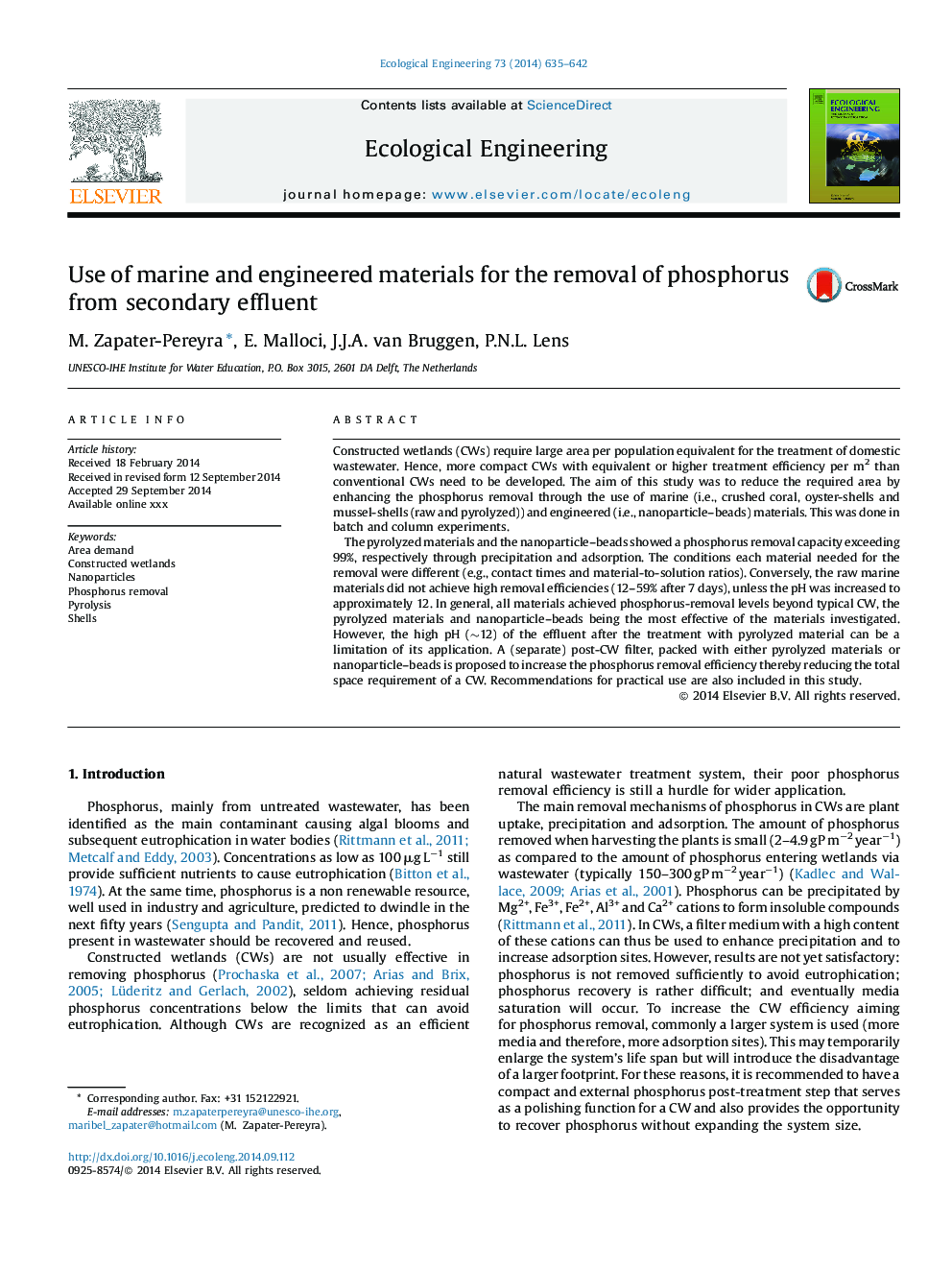| Article ID | Journal | Published Year | Pages | File Type |
|---|---|---|---|---|
| 6302035 | Ecological Engineering | 2014 | 8 Pages |
Abstract
The pyrolyzed materials and the nanoparticle-beads showed a phosphorus removal capacity exceeding 99%, respectively through precipitation and adsorption. The conditions each material needed for the removal were different (e.g., contact times and material-to-solution ratios). Conversely, the raw marine materials did not achieve high removal efficiencies (12-59% after 7 days), unless the pH was increased to approximately 12. In general, all materials achieved phosphorus-removal levels beyond typical CW, the pyrolyzed materials and nanoparticle-beads being the most effective of the materials investigated. However, the high pH (â¼12) of the effluent after the treatment with pyrolyzed material can be a limitation of its application. A (separate) post-CW filter, packed with either pyrolyzed materials or nanoparticle-beads is proposed to increase the phosphorus removal efficiency thereby reducing the total space requirement of a CW. Recommendations for practical use are also included in this study.
Related Topics
Life Sciences
Agricultural and Biological Sciences
Ecology, Evolution, Behavior and Systematics
Authors
M. Zapater-Pereyra, E. Malloci, J.J.A. van Bruggen, P.N.L. Lens,
